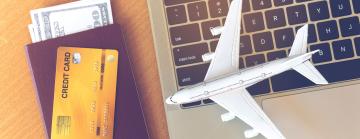Frequently Asked Questions
Do you have a Travel question?
To quickly find what you’re looking for, use the search bar or drop-down button below to filter FAQs by keyword or category.
Yes, travel must not exceed the equivalent airfare. A traveler may choose to use an automobile or other surface transportation for personal reasons even if air travel is the appropriate mode of transportation.
For this situation, surface transportation expenses may not exceed the airfare SLAC would have paid if air travel had been used, along with the normal cost of ground transportation to and from airports.
The per diem cost of meals, lodging, tolls, ferries, and parking while in transit via surface transportation may be expensed if the total amount reimbursed does not exceed the equivalent airfare.
- Coach class fare plus ground transportation.
- U.S. flag carrier and at least seven days advance purchase.
- Screenshot of the airfare comparison attached to the Concur expense report.
- For two or more individuals traveling together on business, the sum of all airfare and ground transportation amounts are used.
An itinerary, invoice, ticket, or receipt (including printouts of electronic versions of these documents) that shows proof of payment (e.g., the card being charged) must be included when reporting airfare expenses. The receipt for airfare must be attached to your Concur expense request.
Documentation must include all the following information or the request will be returned:
- Dates of travel
- Time of departure
- Flight numbers
- Class of service
- Fare basis
- Ticket number or confirmation code
- Cost of ticket
- Proof of payment (the type of card used and the last 4 digits of the card number)
Yes, you may travel on an upgraded class at your own expense or through the redemption of your personal frequent flier miles. Please note on your expense report when an upgraded class is taken and the way this class was paid (personal expense, mileage, ETC).
To ensure that these are separate, you can book your initial flight through our SLAC Travel booking channels. You can visit the airline website directly with your ticket/confirmation number to process the upgrade.
Note: SLAC will not reimburse for any sort of upgraded class, seat upgrade, or preferred seat.
The traveler should make every attempt to receive the refund from the airline before submitting an expense report. If a refund cannot be received please submit an Unused Air Ticket Affidavit.
For visitors who are unable to receive refunds from the airline for their flight, please submit a Visitor Unused Air Ticket Affidavit.
SLAC Travel Booking Channels are the required booking method for employees booking air travel. Generally, documentation of fare comparison is not required when the business trip is booked according to SLAC's Travel and Expense Policy. Fare comparison documentation is required when any of the following occurs:
- The trip includes a personal component
- The itinerary is an indirect route
- The fare class is out of policy
- The most economical method of transportation is not selected for a trip, for example, a rental car is selected instead of air travel
The expense report must include an attachment with the fare comparison documentation. The fare comparison documentation is most often in the form of a screenshot. The search results should be taken the same day of booking from a SLAC booking channel. The screenshot must visibly note:
- The time and date of the search (i.e., from the taskbar on your desktop)
- Include a broad set of search results (e.g., all applicable carriers)
- The applicable parameters, such as the most direct route, excluding any personal stops, and the appropriate fare class (e.g., coach, non-refundable)
NOTE: If the attached screenshot is dated post-travel, Travel will calculate an online comparison at the time of processing and will pay based on the lesser of their own comparison or that provided by the traveler. For guidance on documenting a fare comparison, refer to the How to Document an Airfare Comparison Quick Start Guide.
Long-term travel is defined as a travel period of 30 days or longer. In these instances, the traveler is required to use the per diem reimbursement method, and the per diem rate is reduced to 55 percent for the trip. The assumption is that when staying 30 days or longer, a traveler can find cheaper accommodations than regular hotel rates.
- When an individual's original estimated travel is for more than 30 days in one location, these reduced rates of 55% of the per diem rate apply from the first day.
- When an individual in travel status at a location is granted an extension to a trip originally estimated to be less than 30 days, the 30-days-or-less rate applies for the first 30 days and the more-than-30-days rate of 55% applies from the 31st day through the end of the trip.
The use of the SLAC Travel Booking Channels and the Travel Card (T-Card) would not be permitted in this circumstance. Travelers and preparers can refer to the Handling Meals and Lodging for a Trip Over 30 Days Quick Start Guide.
In these instances, the per diem rate is reduced to 55 percent for the trip.
No, reconciliation/reimbursement for travel expenses should not be requested until after travel is completed.
Contact Us for More Information
Please view our Travel and Expense Policy for details about reimbursable and non-reimbursable expenses. For all travel expenses that are not reimbursable, you must not incur/reconcile a Travel Card (TCard) expense or seek reimbursement.


